I started my undergraduate studies in economics in the late 1970s after starting out as…
What if – public employment?
Some readers have been picking up on various statements I have made about the decline in public employment in Australia over the last thirty or so years and what it means for the trajectory of unemployment. I am on the public record as saying that if the persistence of unemployment in Australia is largely to do with the failure of the public sector employment to maintain growth in line with labour force growth. If it had have achieved this then we would have had very low levels of unemployment during the growth period following the 1991 recession. The 1991 recession was much worse because the public sector cut its employment growth. Further, while neo-liberals hold the US out as a model for us to follow, the fact remains that US government employment growth has more or less maintained pace with US labour force growth. The resulting unemployment dynamics are in stark contrast to those found in Australia.
In Australia, since 1974, the ideas of free market economists have dominated the policy debate despite being discredited during the Great Depression. The resulting policies were based on a belief that the market would generate full employment if left to operate without government regulation.
The following graph shows that since the change in policy stance in the mid-1970s total employment has failed to grow in proportion to the labour force. This divergence between total employment and the labour force reflects the performance of both private and public employment.
Since the 1970s, the Australian public sector (particularly at the federal level) has substantially reduced its role as an employer, and the private sector has been unable to generate compensatory increases in jobs growth. The result has been the persistently high unemployment since the mid-1970s. This graph, of-course, understates the rising labour underutilisation over this period because the quality of the employment has fallen.
Increasing numbers of the employed are seeking more hours than are available and the result is rising underemployment. We abstract from that pathology in this blog.
To give you an idea of what has been going on since 1966 with respect to employment growth (public and private) and labour force growth, the following table summarises the data by discrete periods.
We see that private employment grew on average at a rate of 1.91 per cent per annum compared to the labour force, which grew by 1.88 per cent per annum for the period 1970-2007. Total employment growth was 1.71 per cent per annum which means that the unemployment levels rose over the period.
You can see the reason why by looking at the performance of public employment growth which was a parlous 0.87 per cent over the same period.
The collapse in public employment occurred just when it was needed most – during the 1980s following the 1982 recession as the newly elected Labor government set about installing the neo-liberal regime which panache.
But the worst example of policy failure occurred during the 1990s following the biggest recession since the Great Depression. There public employment growth was negative. This was entirely due to federal government employment cut-backs as privatisation and decimation of the public sector proper gathered pace and budget surpluses became the norm (in that latter half of the 1990s).
Following the mass privatisations in the late 1980s and throughout the 1990s, employment in the public enterprises plummeted (304 thousand jobs were lost between 1985 and 2000). The losses accelerated in the 1990s. The privatisations transferred public sector employment to the private sector. But the growth in private employment has not been sufficient to offset the public sector losses.
The evidence negates the neo-liberal claims that the private sector would absorb workers released from the public sector after the severe cutbacks. At the time, the then Prime Ministers Hawke then Keating both mouthed this assertion that the privatisations were merely transferring workers between sectors.
But it is clear that the private sector was not been able to significantly increase its percentage of employment.
Further, while the private sector has maintained employment growth in proportion to the labour force growth the ratio of full-time to part-time employment has changed dramatically. It is true that some of this change reflects the preferences of the workforce for casual arrangements. But ABS data shows that over that time, the percentage of part-time workers who wanted to work more hours had doubled (now at around 29 per cent).
Now, as an experiment, what if public employment growth matched labour force growth over the period since 1970 (ignoring discouraged worker effects and therefore understating the problem)? The result is that an extra 740 thousand jobs would have been created by 2007.
The official unemployment rate in 2007 was 7.5 per cent. If the public employment growth had have followed the labour force growth then the unemployment rate would have been 0.8 per cent in 2007 because an extra 740 thousand persons would have been undertaking public service.
In other words, the explicit decision by the government to withdraw from its employment responsibility has been instrumental in generating the high unemployment we still face.
The following graph shows you the result of that experiment. The blue line is actual public employment whereas the red line is the public employment level that would have been achieved if it kept pace with labour force growth since 1970.
To see what this means for the evolution of the unemployment rate, the following graph shows that actual unemployment rate in Australia between 1970 and 2007, whereas the blue line is an approximation for what the rate would have been had public employment growth in line with the labour force.
I say an approximation because the extra stimulus coming from the higher public employment would have pushed both labour force and private employment growth a bit higher overall. But that would have been a less important effect relative to the demand-side impact of the public employment growth. The conclusion is that in the US, unemployment is not being driven by a major withdrawal of public sector employment as is the case in Australia.
United States public employment
In Australia, the neo-liberals often point to the US as the model for us to follow. They are of-course referring to the heightened levels of deregulation and the inequitable and poorly performing health system (which they somehow think is functional) among other neo-liberal splendours.
But it is, in actual fact, interesting to compare the US public employment performance since 1970 in the light of how badly its Australian counterpart has performed.
The following table shows employment growth (public and private) and labour force growth since 1966 (to 2009) for the US labour market. It should be read in comparison with the Australian table above.
The obvious point is that employment in the US public sector has nearly kept pace with the growth in the labour force over the entire period since 1970 and total employment growth has matched labour force growth. This stands in contradistinction to the way our public sector has behaved.
The next graph shows the same type of simulation for the USA since 1970 that we performed for Australia above. So we simulated public employment growth by matching labour force growth over the period since 1970 (again ignoring discouraged worker effects and therefore understating the problem). It is clear that there has been some retreat from the US public sector since the 1980s as its employment growth started to lag somewhat behind labour force growth.
But the withdrawal is minor relative to what we have seen in Australia. There has not been the absolute contraction in the US that we have witnessed here. So it is ironic that while the neo-liberals hold the US out as the exemplar for us to follow, I am sure they would not be happy for our government to mimic the US government’s employment performance (relative to labour force growth).
Finally, to see what this means for the evolution of the unemployment rate, the following graph shows that actual unemployment rate in the USA between 1970 and 2009 (red line), whereas the blue line is an approximation for what the rate would have been had public employment growth in line with the labour force. It is clear that the behaviour of US government employment is not the main driver of changing unemployment in the US, in stark contrast to what we found to be the case in Australia.
Conclusion
The evolution of public employment growth in Australia, has been complicated by the massive privatisations that have occurred, particularly in the 1990s.
Some of the declines in public sector employment are in fact transfers to the private sector. There are two interpretations of this in relation to the failure of the economy to restore full employment over the 1970-2007 period.
The failure to return to full employment over this period is either due to failure of the private sector to deliver enough jobs in its own right (net of the transfer), or due to the explicit abandonment of the public sector of the full employment ideal.
The government may argue that it believed the private sector would take up the gap left by the public sector failing to achieve growth commensurate with the labour force. But this would have required historically high private employment growth rates such that we have never seen before.
There have also been enough years elapsed for the government to see that this wish was not going to come true and that the responsibility for maintaining full employment was theirs alone.
Until the public sector restores a commitment to full employment, Australia will languish with high unemployment and the resulting increases in inequality.
The lesson following the 1991 recession should be heeded by the Federal government in Australia. It needs to lift public sector employment growth considerably to ensure we eat into the massive labour underutilisation that bedevils the nation.
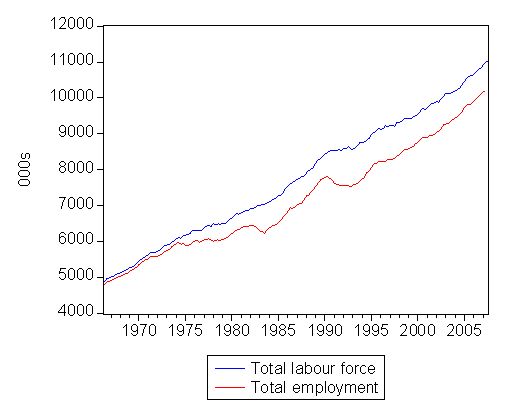
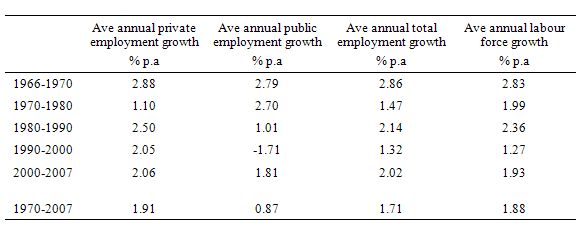
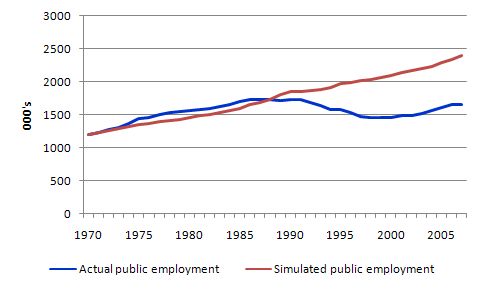
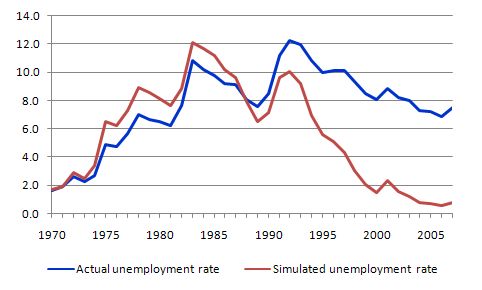
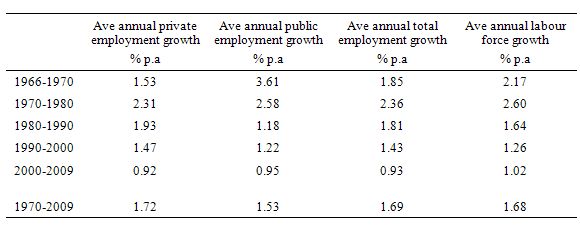
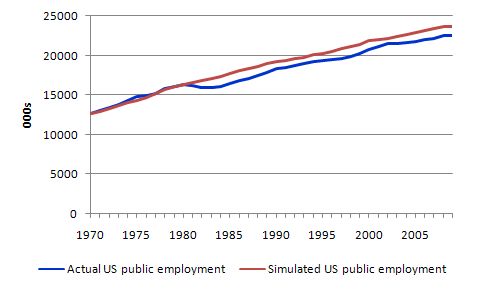
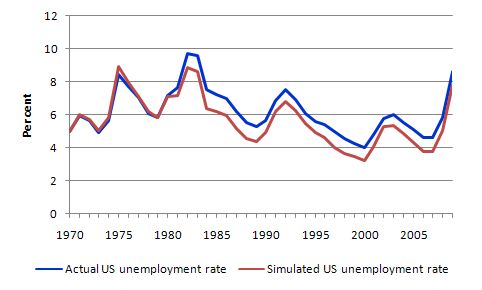
This Post Has 0 Comments